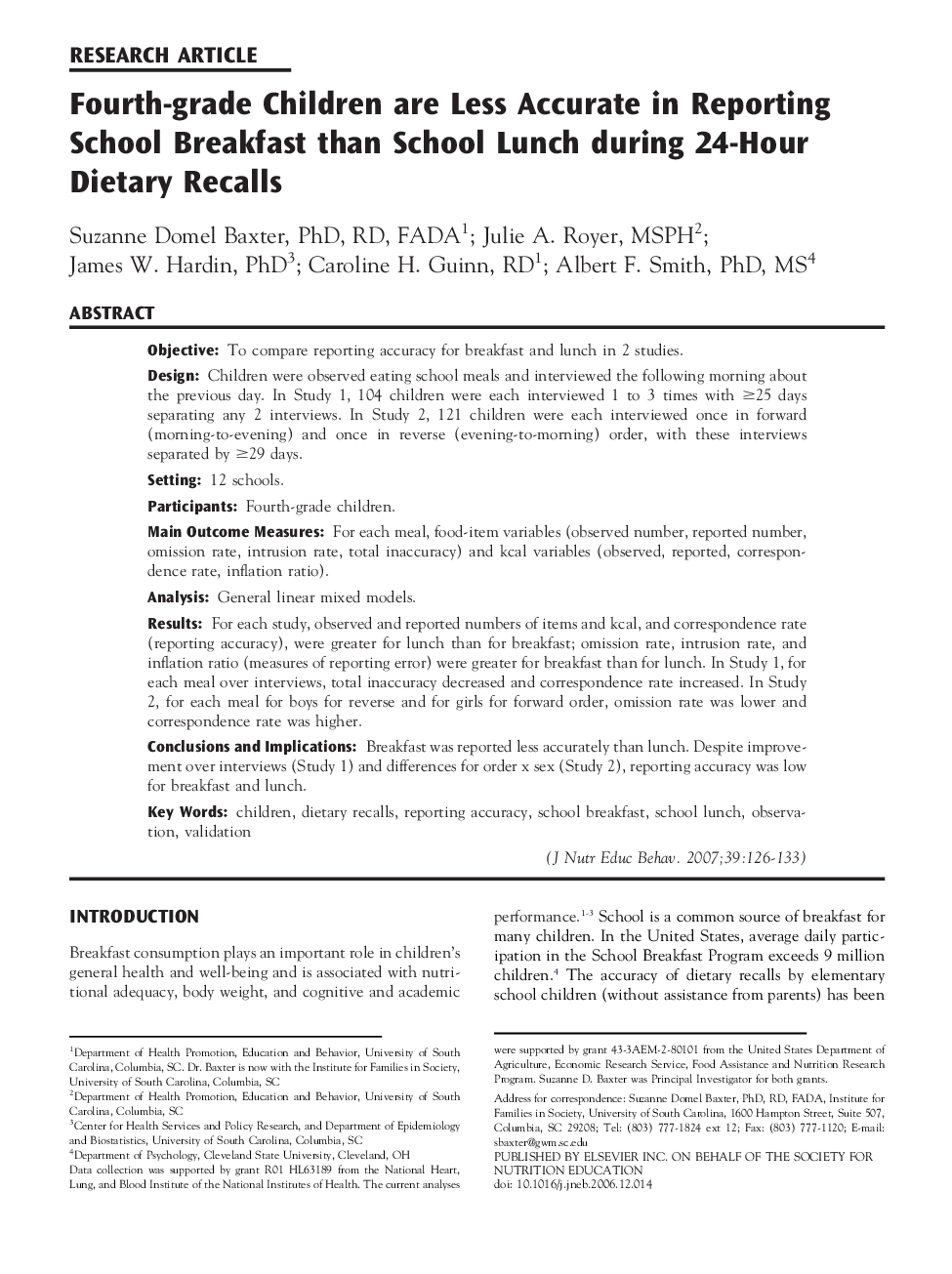| Article ID | Journal | Published Year | Pages | File Type |
|---|---|---|---|---|
| 363128 | Journal of Nutrition Education and Behavior | 2007 | 8 Pages |
ObjectiveTo compare reporting accuracy for breakfast and lunch in 2 studies.DesignChildren were observed eating school meals and interviewed the following morning about the previous day. In Study 1, 104 children were each interviewed 1 to 3 times with ≥25 days separating any 2 interviews. In Study 2, 121 children were each interviewed once in forward (morning-to-evening) and once in reverse (evening-to-morning) order, with these interviews separated by ≥29 days.Setting12 schools.ParticipantsFourth-grade children.Main Outcome MeasuresFor each meal, food-item variables (observed number, reported number, omission rate, intrusion rate, total inaccuracy) and kcal variables (observed, reported, correspondence rate, inflation ratio).AnalysisGeneral linear mixed models.ResultsFor each study, observed and reported numbers of items and kcal, and correspondence rate (reporting accuracy), were greater for lunch than for breakfast; omission rate, intrusion rate, and inflation ratio (measures of reporting error) were greater for breakfast than for lunch. In Study 1, for each meal over interviews, total inaccuracy decreased and correspondence rate increased. In Study 2, for each meal for boys for reverse and for girls for forward order, omission rate was lower and correspondence rate was higher.Conclusions and ImplicationsBreakfast was reported less accurately than lunch. Despite improvement over interviews (Study 1) and differences for order x sex (Study 2), reporting accuracy was low for breakfast and lunch.
